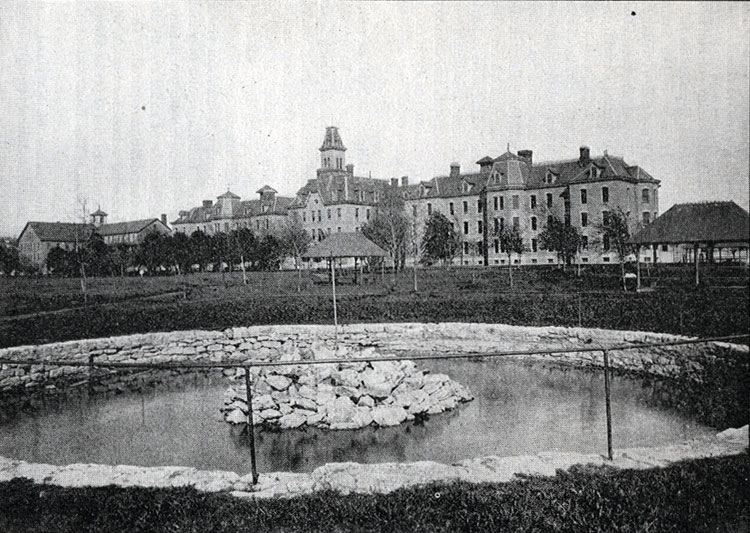
1901 view of the Almshouse hospital building. Image source: private collection
New York State passed a law in 1824 mandating that counties create almshouses to provide for the indigent. Erie County responded by building its first building at 1828 on 90 acres at Fargo and Porter Avenues. This proved inadequate and, in 1851 the county purchased 148 acres just across the city line in an area called Buffalo Plains. Eventually, the county almshouse featured separate residences for men and women, a hospital, a tuberculosis ward, and a large aslyum for the mentally ill. New York State passed another law in 1893 which assigned responsbility for the mentally ill to the State. In 1902, critics urged the separation of the home from the hospital, citing their separate missions. When the the mentially ill inmates were transferred from the large building above in 1903, the county transformed the structure into a 400-bed hospital for the indigent called the Erie County Hospital. |
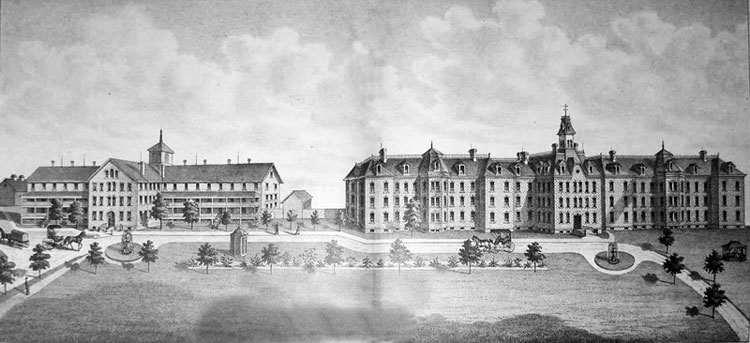
Lithograph of the Almshouse Grounds, main building on left, hospital at right. Image source: private collection
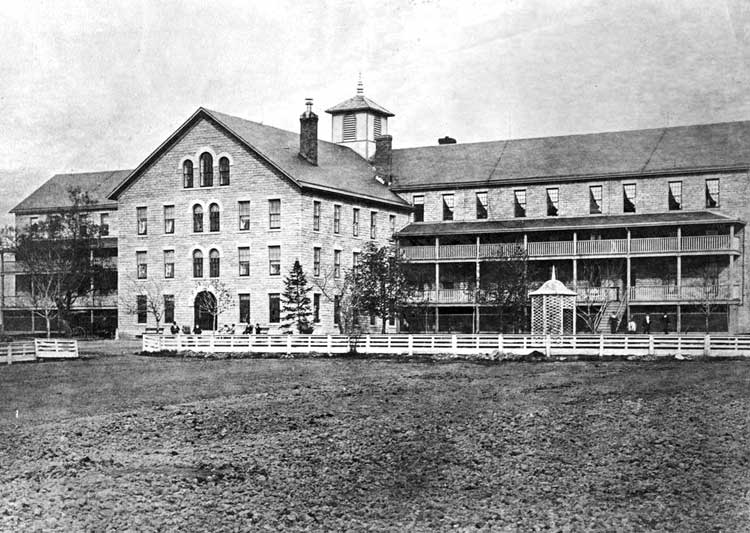
Main building which included the administration offices.
Image source: Harvard Art Museums
Eventually, the county almshouse complex, which was renamed the Erie County Home and Hospital in 1910, featured stone and wood buildings for a kitchen, heating plant, laundry, nurses' residence, and children's building in addiiton to the hospital building, tuberculosis building, and dormitories. But the management and conditions at both home and hospital were the frequent subject of impassioned arguments played out in the local newspapers and legislatures. In 1907, agitation began to remove the county home for the indigent out of the city and onto a farm in the country. The Home's supervisor was quoted as saying, "That the city is not a proper place for an institution like the almshouse; that an almshouse in the country can be made nearly self-supporting; that it is impossible to keep the paupers locked up and they frequently wander without the grounds and appear on the streets of the city as mendicants; that they visit saloons, get drunk and smuggle drink into the almshouse; that the so-called almshouse farm is not capable of successful tilling, even for the hay to feed the livestock on the farm..." Stories exposing fraud and mismanagement came to light every few years. The state board of charities condemned the almshouse in 1907, exposing unsanitary conditions, declaring it "wholly unfit and inadequate" and recommended moving to a farm in the country. Slowly, changes began in the delivery of services to the poor. In 1909, the University of Buffalo purchased most of the county land at Main & Bailey for its permanent home. In 1918, the hospital patients housed at Main Street were moved to the new Buffalo City Hosptial, a move that consolidated both city and county poor. The photo pictorial below shows the last photos taken on the grounds of the Main & Bailey Home before the new facilty was completed in Alden. |
Photos below are from a 1923 Buffalo Express pictorial entitled,
"Quick Trip Through Erie County Home and Hospital Better Known as The 'Poorhouse.'"
Captions are from the pictorial.
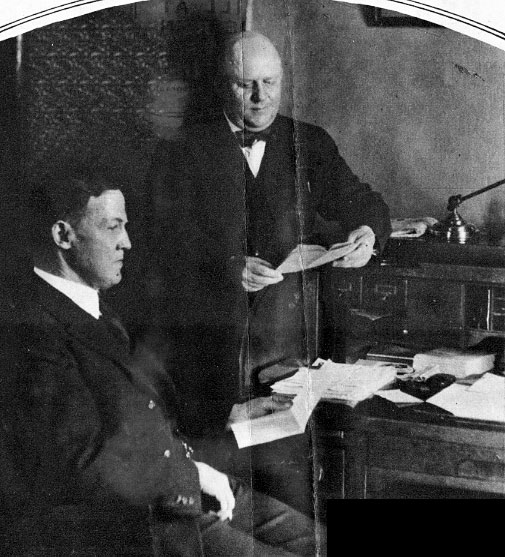
"Deputy Commissioners. James Dudley and Edward C. Streile are in charge of the
county home and hospital."
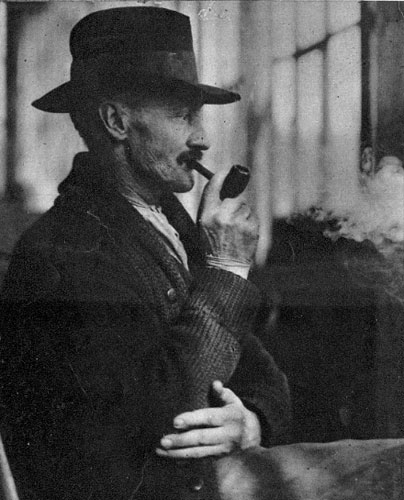 "Enjoying the Sunday morning smoke. Many are the thoughts that form themselves in each cloud as he blows them out." "Enjoying the Sunday morning smoke. Many are the thoughts that form themselves in each cloud as he blows them out." |
 "Most all the work at the institution is done by the people living there." |
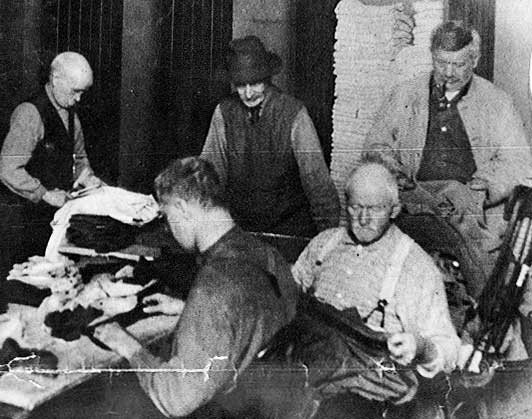
"Mending socks and keeping clothing in repair. Some of these men are tailors and others
were taught how to be handy with the needle."
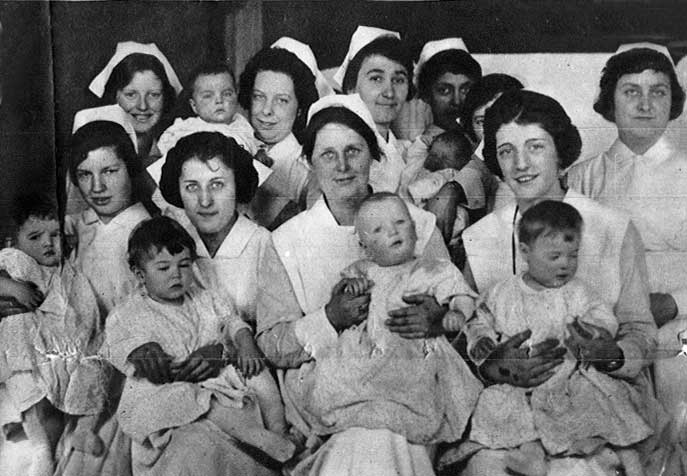
"Some of the younger folk at the hospital. Nurses of the 1923 class find plenty of amusements in the
work of this branch of the hospital."
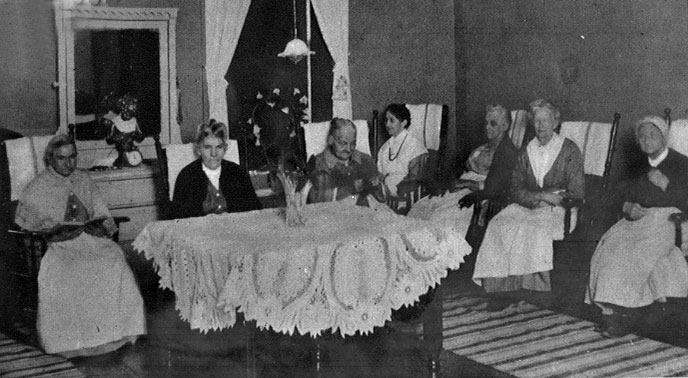
"Women's sitting room. It is here that the knitting needles fly and many interesting tales are told."
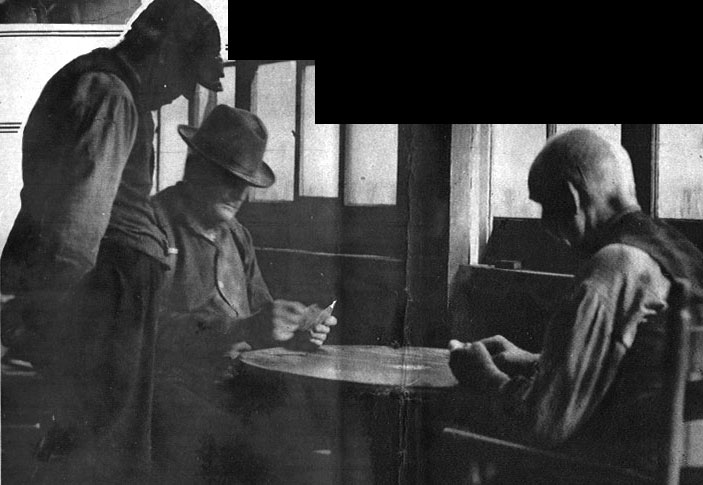
"Many is the pleasant hour passed with cards. If you don't think these lads can play just go out and try your hand with them."
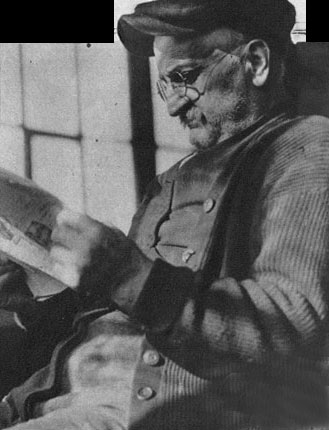 "Sun bath. Looks as if he 'didn't believe everything he sees in the paper.'" |
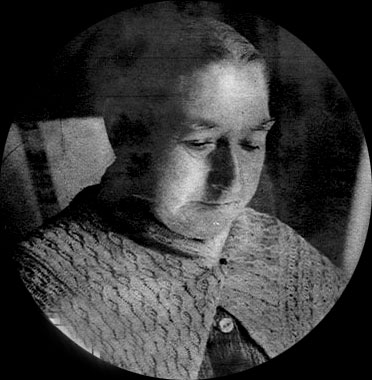 "Aunt Mary. Enjoying a few quiet minutes with the Sunday Express." |
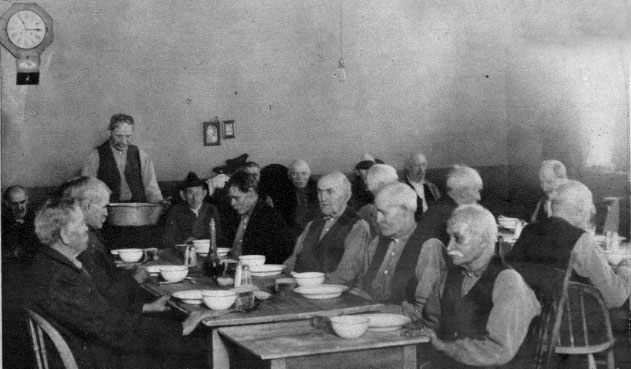
"In their places for lunch. There are but three really great events during the day - Breakfast, Luncheon, and Dinner."
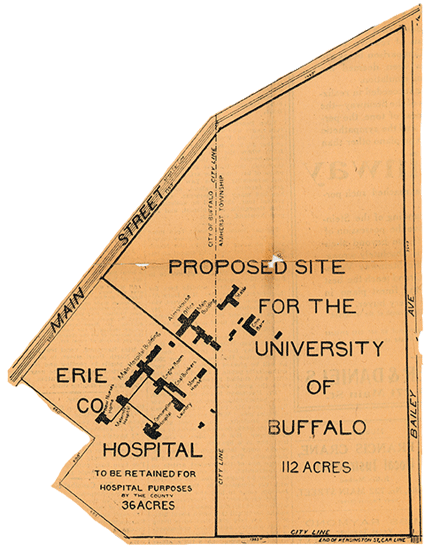
The property owned by the county for the home and hospital in 1909. Drawing shows the land to be
sold to the University of Buffalo. See that story here.
Land in Alden was donated by the Wende family for a new county Home to be built across from the County Correctional Facility. The new facility opened in 1927 during a time when social services policies were evolving. The Alden county home served only the elderly indigent who were unable to take care of themselves from its opening. Over the decades, public figures regularly raised questions about the management of the facility, the condition of the buildings, and the very question of whether the county should maintain a skilled nursing facility. In 2009 with costs rising at the aging facilty, its residents miles away from friends and relatives, the county and its medical center agreed on the closure of the Alden facility and the construction of an building adjacent to ECMC to care for 390 elderly Medicaid recipients. On February 10, 2013, residents of the Alden facility were transported to the new Terrace View Long-Term Care Facility on Grider Street. It is connected to ECMC by a corridor. The Alden facility is vacant in 2013 and the county is searching for a use or a purchaser. |